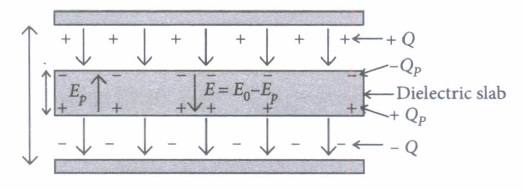In Class 12 Boards there will be Case studies and Passage Based Questions will be asked, So practice these types of questions. Study Rate is always there to help you. Free PDF Download of CBSE Class 12 Physics Chapter 2 Electrostatic Potential and Capacitance Case Study and Passage Based Questions with Answers were Prepared Based on Latest Exam Pattern. Students can solve NCERT Class 12 Physics Electrostatic Potential and Capacitance to know their preparation level.
In CBSE Class 12 Physics Paper, Students will have to answer some questions based on Assertion and Reason. There will be a few questions based on case studies and passage-based as well. In that, a paragraph will be given, and then the MCQ questions based on it will be asked.
Electrostatic Potential and Capacitance Case Study Questions With answers
Here, we have provided case-based/passage-based questions for Class 12 Physics Chapter 2 Electrostatic Potential and Capacitance
Case Study/Passage-Based Questions
Question 1:
A dielectric slab is a substance that does not allow the flow of charges through it but permits them to exert electrostatic forces on one another.
When a dielectric slab is placed between the plates, the field Eo polarises the dielectric. This induces charge -Qp on the upper surface and + Qp on the lower surface of the dielectric. These induced charges set up a field Ep inside the dielectric in the opposite direction of E⃗ 0E→0 as shown.
(I) In a parallel plate capacitor, the capacitance increases from 4μF to 80μF on introducing a dielectric medium between the plates. What is the dielectric constant of the medium?
| (a) 10 | (b) 20 | (c) 50 | (d) 100 |
Answer: (b) 20
(ii) A parallel plate capacitor with air between the plates has a capacitance of 8 pF. The separation between the plates is now reduced by half and the space between them is filled with a medium of dielectric constant 5.
Calculate the value of capacitance of the capacitor in the second case.
| (a) 8pF | (b) 10pF | (c) 80pF | (d) 100pF |
Answer: (c) 80pF
(iii) A dielectric introduced between the plates of a parallel plate condenser
| (a) decreases the electric field between the plates | (b) increases the capacity of the condenser |
| (c) increases the charge stored in the condenser | (d) increases the capacity of the condenser |
Answer: (d) increases the capacity of the condenser
(iv) A parallel plate capacitor of capacitance 1 pF has separation between the plates is d. When the distance of separation becomes 2d and wax of dielectric constant x is inserted in it the capacitance becomes 2 pF. What is the value of x?
| (a) 2 | (b) 4 | (c) 6 | (d) 8 |
Answer: (b) 4
Question 2:
When an insulator is placed in an external field, the dipoles become aligned. Induced surface charges on the insulator establish a polarization field Ēi in its interior. The net field Ē in the insulator is the vector sum of Ē, and Ēi as shown in the figure.

On the application of external electric field, the effect of aligning the electric dipoles in the insulator is called
polarisation and the field Ē; is known as the polarisation field.
The dipole moment per unit volume of the dielectric is known as polarisation (P).
For linear isotropic dielectrics, P =χE, where χ = electrical susceptibility of the dielectric medium.
(i) Which among the following is an example of polar molecule?
(2) O₂
(b) H
(c) N2
(d) HCI
Answer: (d) HCI
(ii) When air is replaced by a dielectric medium of constant K, the maximum force of attraction between two charges separated by a distance
(a) increases K times
(b) remains unchanged
(c) decreases K times
(d) increases 2K times.
Answer: (c) decreases K times
(iii) Which of the following is a dielectric?
(a) Copper
(b) Glass
(c) Antimony (Sb)
(d) None of these
Answer: (c) Antimony (Sb)
(iv) For a polar molecule, which of the following statements is true ?
(a) The centre of gravity of electrons and protons coincide.
(b) The centre of gravity of electrons and protons do not coincide.
(c) The charge distribution is always symmetrical.
(d) The dipole moment is always zero.
Answer: (b) The centre of gravity of electrons and protons do not coincide.
(v) When a comb rubbed with dry hair attracts pieces of paper. This is because the
(a) comb polarizes the piece of paper
(b) comb induces a net dipole moment opposite to the direction of field
(c) electric field due to the comb is uniform
(d) comb induces a net dipole moment perpendicular to the direction of field
Answer: (a) comb polarizes the piece of paper
Hope the information shed above regarding Case Study and Passage Based Questions for Class 12 Physics Chapter 2 Electrostatic Potential and Capacitance with Answers Pdf free download has been useful to an extent. If you have any other queries of CBSE Class 12 Physics Electrostatic Potential and Capacitance Case Study and Passage Based Questions with Answers, feel free to comment below so that we can revert back to us at the earliest possible.
